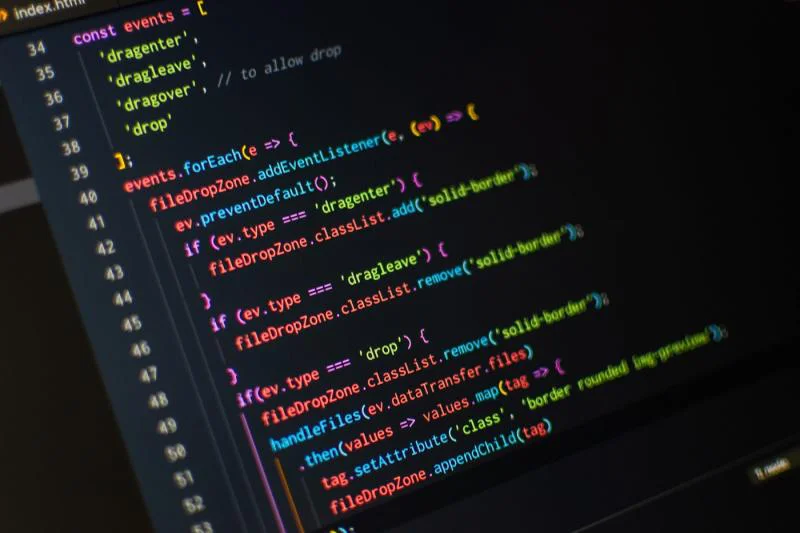The main difference between JAMstack and CMS is in how they are built and what they are used for. JAMstack, which stands for JavaScript, APIs, and Markup, is a new way to build websites. It focuses on pre-rendering static files and using client-side JavaScript to deal with dynamic content. This makes websites that are fast, safe, and easy to scale. On the other hand, a CMS (Content Management System) is a platform for digital content management, usually for websites. CMSs often use server-side rendering and databases to serve dynamic content, making them run slower and more difficult to use than JAMstack. CMSs make managing content easy, but JAMstack puts performance, security, and scalability first.
What is JAMStack?
JAMstack is a modern architecture for building websites that focuses on speed, security, and scalability. The word “JAMstack” is an acronym for JavaScript, Application Programming Interfaces (APIs), and Markup, which are the main parts of this architecture.
JavaScript
Client-side JavaScript handles dynamic functionality, allowing interactivity and improving the user experience without relying on server-side rendering.
APIs
Server-side operations are broken down into APIs that can be used repeatedly. These APIs can be built from scratch or use services from other companies, which frees developers from handling complexity and maintenance. This separates the front end from the back end.
Markup
Static site generators render the HTML markup of a site before it is built. This makes static files that can be served worldwide by Content Delivery Networks (CDNs). This method reduces the amount of work done on the server, which makes pages load faster.
JAMstack encourages the front and backend to focus on different things, speeding up development and making the whole system run better. By using static files and CDNs, JAMstack sites load faster, put less stress on the server, and are safer than traditional sites that are rendered on the server.
Developers like JAMstack because it is easy to use and works well. Its principles of decoupling, pre-rendering, and API-driven architecture let developers make web apps that are reliable, easy to maintain, and fast. It works well for various web applications like blogs, e-commerce, and marketing websites.
What is CMS?
A Content Management System (CMS) is a platform for creating, managing, and publishing digital content, mostly for websites. CMSs have easy-to-use interfaces that let users create, edit, and organise content without technical knowledge or programming skills. This makes building and maintaining websites easier, so a wider range of people can use them.
CMSs usually have two main parts: a frontend, which is the user interface for managing content, and a backend, which stores and organises the content in a database. The CMS takes care of server-side rendering, which creates dynamic web pages based on what the user types in and what’s in the database.
Popular CMS platforms like WordPress, Drupal, and Joomla have templates, themes, and plugins that can be changed to fit the user’s needs. This lets users customise their websites to suit their own needs. There are many communities and resources for these platforms that offer support, documentation, and development expertise.
CMSs are used in many different fields and situations, from personal blogs to e-commerce sites and business portals. Because they are easy to use, flexible, and can streamline content management processes, they are a good choice for people and organisations that want to build and maintain websites without knowing much about technology.
Difference Between JAMStack and CMS
CMS and JAMstack fundamentally differ in their design, development methodology, performance, and intended applications.
Server-side rendering is a common component of content management system architecture; it enables the creation of dynamic web pages in response to user input and data stored in a database. In contrast, JAMstack places emphasis on client-side JavaScript for managing dynamic content, with static assets being pre-rendered during the build process and served over Content Delivery Networks (CDNs).
CMS platforms simplify website creation and maintenance by providing a simple interface for managing content without the need for in-depth technical knowledge. Using application programming interfaces (APIs), JAMstack separates the concerns of the front- and backends.
Because of their static nature and reliance on CDNs, JAMstack sites offer faster load times, better security, and improved scalability. Sites built on content management systems (CMS) are easier for non-technical people to navigate. Still, they may load more slowly and be more complicated because they rely on server-side rendering and databases.
Examples of where a content management system (CMS) would be useful include personal blogs, small business websites, and e-commerce sites, all of which require no technical knowledge on the part of their administrators. When it comes to marketing websites, online applications, and static sites with dynamic functionality, JAMstack is the best option for developers and applications that value speed, safety, and scalability.
In conclusion, CMS and JAMstack are different because CMS provides user-friendly content management, whereas JAMstack prioritises performance, security, and scalability by employing cutting-edge web-building principles.







